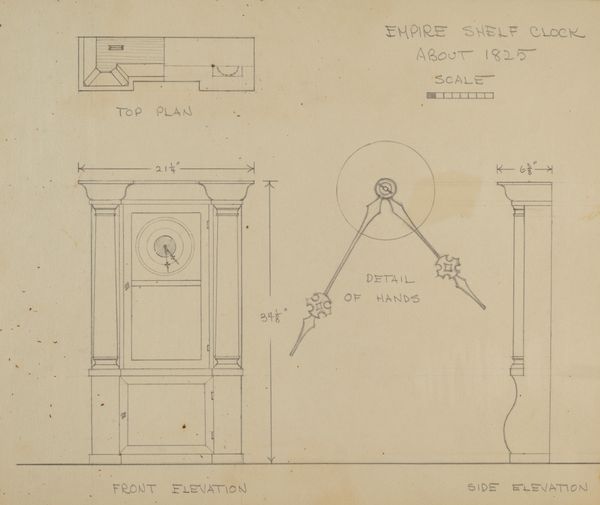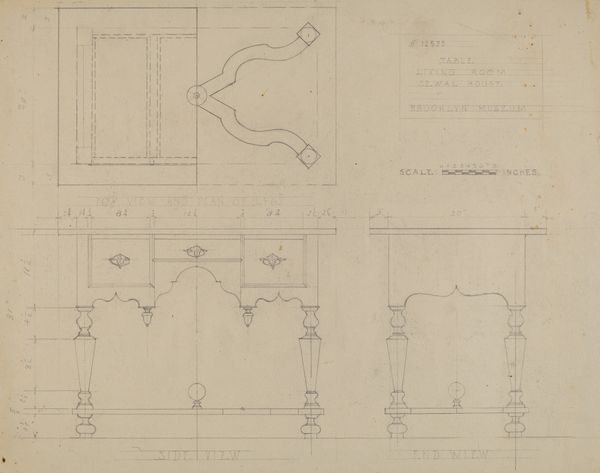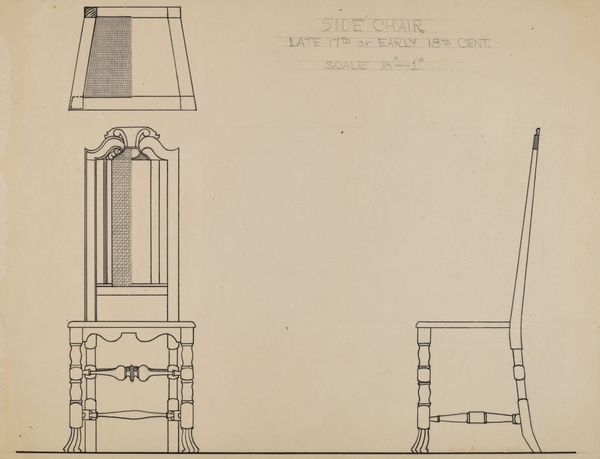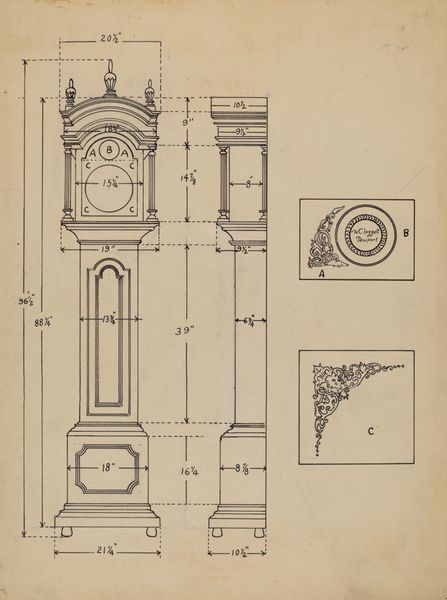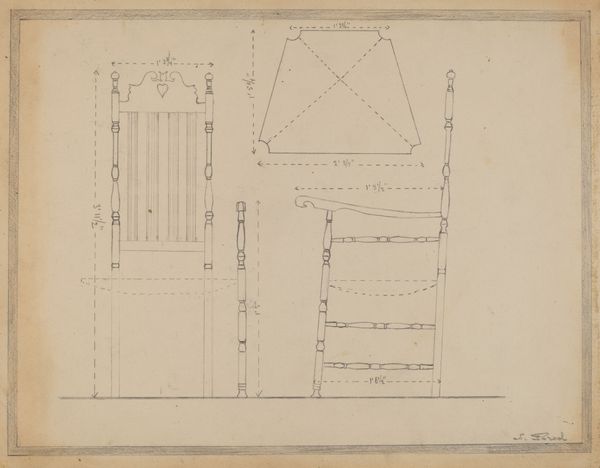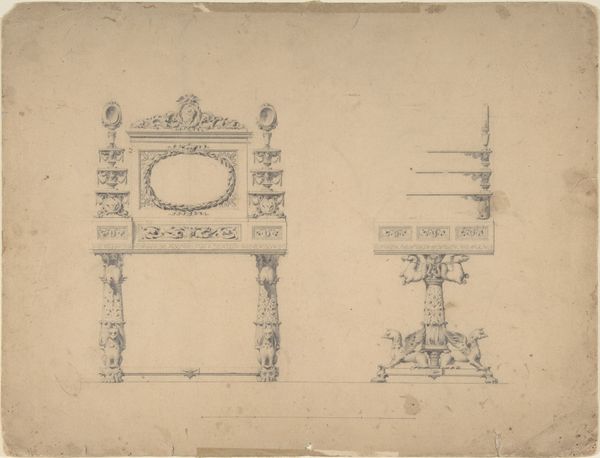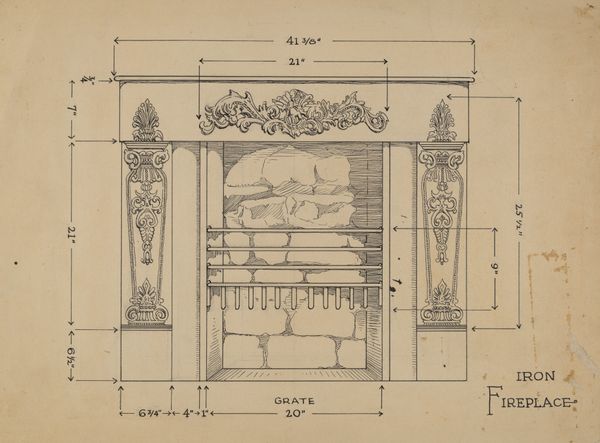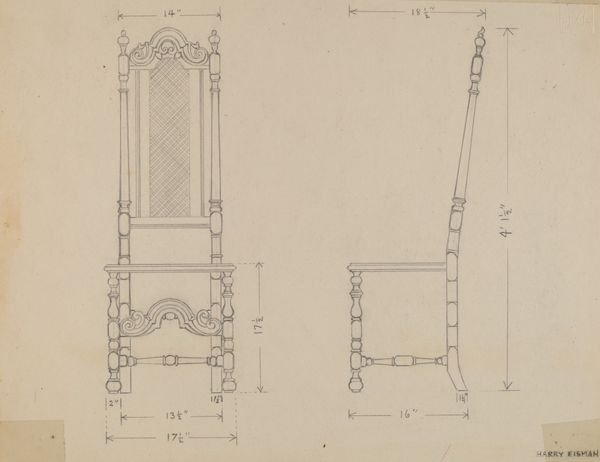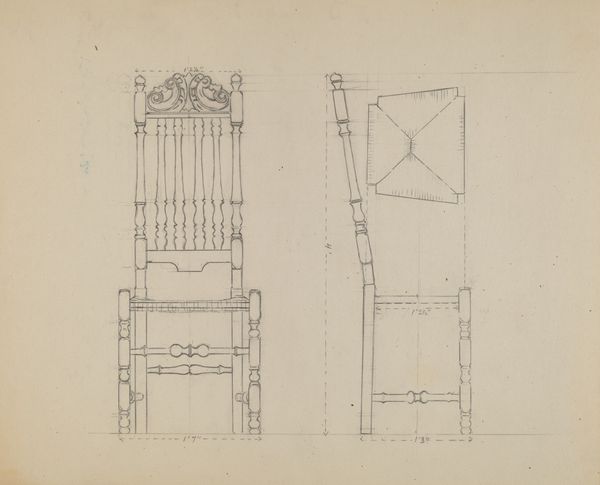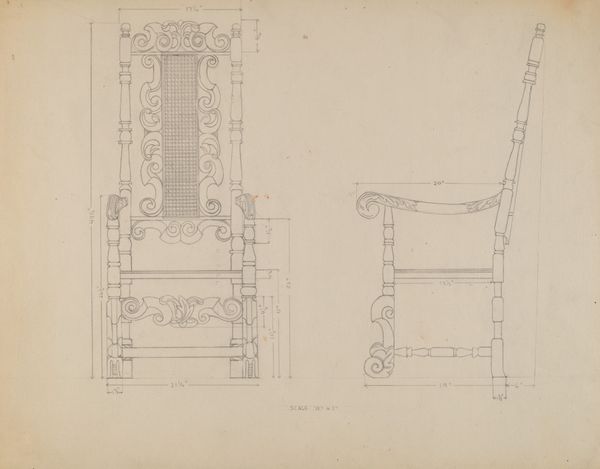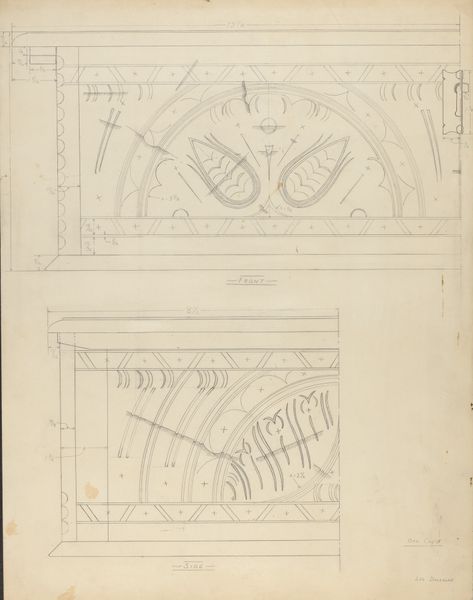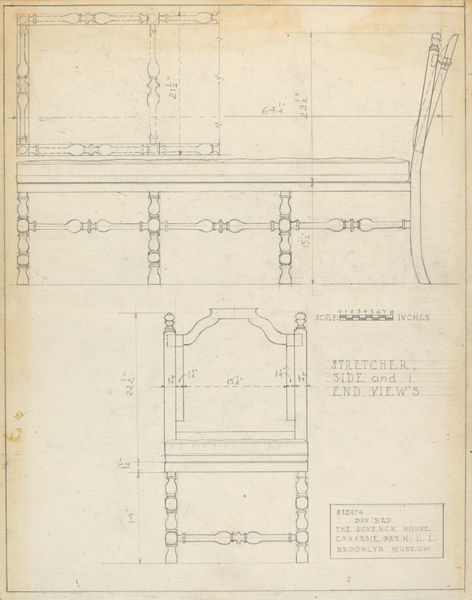
drawing, paper, pencil, architecture
#
drawing
#
paper
#
geometric
#
pencil
#
architecture
Dimensions: overall: 20 x 26.5 cm (7 7/8 x 10 7/16 in.) Original IAD Object: 31 1/4 x 17 x 4 1/2 inches
Copyright: National Gallery of Art: CC0 1.0
Curator: Lawrence Phillips gifts us this drawing from around 1936. Crafted in pencil on paper, it’s titled simply "Clock." What’s your first reaction? Editor: It feels like a ghost, or maybe an architectural premonition. There's something delicate and hopeful in its simplicity. Curator: It's essentially a blueprint of a Terry shelf clock from the early 19th century, meticulous in its top, front, and side elevations. There is also a scaled detail of the hands, as precise and balanced in shape as if ready to turn on its axis any second. Phillips obviously admires it. Editor: Blueprints, especially of time-keeping devices, are fascinating relics. In their geometric shapes, the drawing echoes larger themes around capitalism and industrial time. How it imposes structure on the domestic, everyday life. Curator: Absolutely. The formal symmetry feels so assured and permanent but drawn on paper in pencil, we are also witnessing it as transient—like a sketch fading slowly or eroding off a building’s blueprint. Editor: What I love is this clock feels deeply rooted in domesticity with the embellishment, flourishes, and finials—there's something subtly revolutionary about placing it on the same plane as architectural design. Almost arguing for their cultural and aesthetic significance. Curator: Well, there is a charming contrast. Phillips gives space on the paper to all of the details, the finials, feet, the decorative hands; so important to note in an otherwise functional design, especially as it exists within the home. I keep imagining this clock perched on a shelf, patiently ticking away. Editor: It invites us to question time's control, no? What narratives do these kinds of drawings have the potential to reveal beyond the artistic value? What of the lives regulated by them and what temporal rhythms are resisted. Curator: I suppose Phillips encourages a look at domestic design from different perspectives, offering its value beyond something to be efficiently manufactured and simply owned. Editor: Precisely! A re-imagining, offering a perspective shift about our place with design, and even our relationship to time itself.
Comments
No comments
Be the first to comment and join the conversation on the ultimate creative platform.
